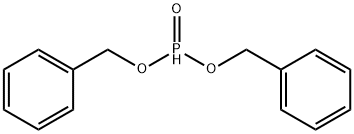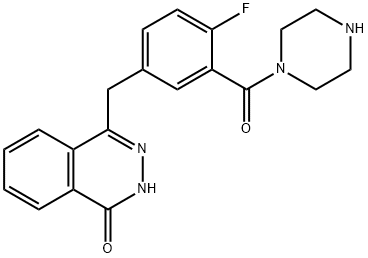Dimethyl phosphite
- CAS NO.:868-85-9
- Empirical Formula: C2H7O3P
- Molecular Weight: 110.05
- MDL number: MFCD00044633
- EINECS: 212-783-8
- SAFETY DATA SHEET (SDS)
- Update Date: 2025-09-25 17:15:13

What is Dimethyl phosphite?
Chemical properties
colourless liquid
The Uses of Dimethyl phosphite
- Dimethyl Phosphite(DMP)is used as a reagent in the synthesis of 4-(thiophen-2-ylmethyl)-2H-phthalazin-1-ones as potent PARP-1 inhibitors.
- It is also used as a reagent in the synthesis of estafiatin phosphonate derivatives which exhibit antibacterial and antifungal activity.
- Dimethyl Phosphite is a degradation product of the pesticides trichlorphon and malathion and may be released into the envionment following their application. It is a contaminant (approxiately 2%) in the chemical intermediate triethyl phosphite, which hydrolyses readily to dimethyl hydrogen phosphite in the presence of moist air or water.
- Dimethyl Phosphite is used as a flame retardant on Nylon 6 fibres and, in combination with guanidine and formaldehyde, to impart flame and crease resistance to cotton textiles. The compound is also used to increase fire resistance to cellulosic textiles, acrolein-grafted polyamide fibres and y-irdiated polyethylene.
- lt is used as a lubricant additive, as a chemical intermediate in the production of organophosphorous pesticides and as an adhesive.
- Dimethyl Phosphite has also been used as a stabilizer in oil and plaster and, in combination with pyroctechol, as a corrosion inhibitor on steel.
The Uses of Dimethyl phosphite
As a flame retardant on Nylon 6 fibers; intermediate in the production of pesticides and herbicides; as a stabilizer in oil and plaster; an additive to lubricants
What are the applications of Application
DMP is a basic chemical which is used industrially as an intermediate. Because of its reactivity
DMP participates in a large number of chemical reactions:
- Addition to oxo compounds
- Addition to oxo compounds with subsequent condensation e.g. with amines
- Oxidation with oxygen or chlorine
- Addition to alkenes
- water treatment chemicals e.g. corrosion inhibitors for cooling-water circuits (about 50 %)
- pesticides and pharmaceuticals (about 20 %)
- flame retardants and other specialities (about 15 %)
- textile finishing products (about 15 %)
Definition
ChEBI: Dimethyl hydrogen phosphite is an organooxygen compound.
Synthesis Reference(s)
Canadian Journal of Chemistry, 34, p. 1819, 1956 DOI: 10.1139/v56-235
Health Hazard
Dimethyl Phosphite (DMP) is rapidly absorbed via the oral and dermal routes. The main metabolic pathway in rodents is demethylation to monomethyl hydrogen phosphite (MMP) and further oxidation to CO2. DMP was mainly eliminated via urine and expired air. Over the studied dose range between 10 and 200 mg/kg bw and 5 x 200 mg/kg bw, respectively, only little evidence of bioaccumulation or saturation of absorption and elimination was observed. The only difference in studied toxicokinetics between rats and mice was the more rapid metabolism and elimination in mice.
An inhalation LC50 value is not available, but an exposure of 7100 mg/m³ (concentration estimated based on air flow and net loss of material) over 6 hours was not lethal for rats, mice and guinea pigs. Clinical signs were observed in mice only, and included occasionally laboured respiration after approximately 2 hours of exposure and ptosis after 5 hours. The acute dermal LD50 was 681 mg/kg bw (rabbits). Signs of intoxication were depression, ptosis, labored respiration, ataxia and placidity. The acute oral LD50 values were: 3283 mg/kg bw for male rats, 3040 mg/kg bw for female rats, 2815 mg/kg bw for male mice, and between 2150 and 3160 mg/kg bw for female mice. Clinical signs were inactivity, weakness, prostration and shallow breathing at doses near to or exceeding the LD50 values. White opaque eyes were seen in male mice.
Dimethyl Phosphite is irritating to the skin and eyes of rabbits. After prolonged or repeated exposures moderate to severe irritation of skin and mucosa was observed in rats. No sensitisation studies are available.

Proposed metabolic pathways of DMP in rats and mice (Nomeir and Matthews, 1997).
Safety Profile
Suspected carcinogen with experimental carcinogenic data. Moderately toxic by ingestion and skin contact. A skin and eye irritant. Mutation data reported. When heated to decomposition it emits toxic fumes of POx
Carcinogenicity
Dimethyl hydrogen phosphite was not
mutagenic to several strains of Salmonella
typhimurium, but it did cause sister chromatid
exchanges and chromosomal aberrations in the
Chinese hamster CHO line.
An ACGIH threshold limit value (TLV)
has not been established for dimethyl hydrogen
phosphite.
Properties of Dimethyl phosphite
| Boiling point: | 170-171 °C(lit.) |
| Density | 1.2 g/mL at 25 °C(lit.) |
| refractive index | n |
| Flash point: | 71 °C |
| solubility | Chloroform (Slightly), Methanol (Slightly) |
| form | Colorless liquid with a mild
odor |
| Water Solubility | Soluble in water. |
| Sensitive | Moisture Sensitive |
| BRN | 1697490 |
| Stability: | Stable. Moisture sensitive. Incompatible with water, strong oxidizing agents, acid chlorides, strong bases. |
| InChI | InChI=1S/C2H7O3P/c1-4-6(3)5-2/h6H,1-2H3 |
| CAS DataBase Reference | 868-85-9(CAS DataBase Reference) |
| IARC | 3 (Vol. 48, 71) 1999 |
| NIST Chemistry Reference | Phosphonic acid, dimethyl ester(868-85-9) |
| EPA Substance Registry System | Dimethyl phosphite (868-85-9) |
Safety information for Dimethyl phosphite
| Signal word | Warning |
| Pictogram(s) |
 Exclamation Mark Irritant GHS07  Health Hazard GHS08 |
| GHS Hazard Statements |
H317:Sensitisation, Skin H341:Germ cell mutagenicity H351:Carcinogenicity H412:Hazardous to the aquatic environment, long-term hazard |
| Precautionary Statement Codes |
P201:Obtain special instructions before use. P273:Avoid release to the environment. P280:Wear protective gloves/protective clothing/eye protection/face protection. P302+P352:IF ON SKIN: wash with plenty of soap and water. P308+P313:IF exposed or concerned: Get medical advice/attention. |
Computed Descriptors for Dimethyl phosphite
| InChIKey | HZCDANOFLILNSA-UHFFFAOYSA-N |
| SMILES | P(=O)(OC)OC |
Dimethyl phosphite manufacturer
New Products
4,4-Difluoropiperidine hydrochloride tert-butyl 9-methoxy-3-azaspiro[5.5]undecane-3-carboxylate Indole Methyl Resin N-Isopropylurea N,N-Dicyclohexylcarbodiimide(DCC) MELDRUMS ACID 5-METHYLISOXAZOLE-4-CARBOXYLIC ACID Magnessium Bis glycinate Zinc ascorbate 1-bromo-2-butyne 2-acetamidophenol 9(10H)-anthracenone Erythrosin B, 4-Piperidinopiperidine 2-((4-morpholinophenylamino) (methylthio) methylene) malononitrile 2,4-dihydroxybenzaldehyde 3-(4-morpholinophenylamino)-5-amino-1H-pyrazole-4-carbonitrile Methyl 2-methylquinoline-6-carboxylate 2,6-dichloro-4-nitropyridine 4-Bromo-2-chlorobenzonitrile 2-(benzylamino)acetic acid hydrochloride 4-(tert-Butoxycarbonylamino)but- 2-ynoic acid 3,4-dihydro-2H-benzo[b][1,4]dioxepine 1-Phenyl-1-cycloprppanecarboxylicacidRelated products of tetrahydrofuran








You may like
-
 868-85-9 DIMETHYL PHOSPHITE 98%View Details
868-85-9 DIMETHYL PHOSPHITE 98%View Details
868-85-9 -
 868-85-9 98%View Details
868-85-9 98%View Details
868-85-9 -
 Dimethyl phosphite 99%View Details
Dimethyl phosphite 99%View Details
868-85-9 -
 Dimethyl phosphite 868-85-9 99%View Details
Dimethyl phosphite 868-85-9 99%View Details
868-85-9 -
 868-85-9 / 96-36-6 Dimethyl phosphite 98%View Details
868-85-9 / 96-36-6 Dimethyl phosphite 98%View Details
868-85-9 / 96-36-6 -
 868-85-9 / 96-36-6 98%View Details
868-85-9 / 96-36-6 98%View Details
868-85-9 / 96-36-6 -
 Dimethyl phosphite 98% CAS 868-85-9View Details
Dimethyl phosphite 98% CAS 868-85-9View Details
868-85-9 -
 Dimethyl phosphite CAS 868-85-9View Details
Dimethyl phosphite CAS 868-85-9View Details
868-85-9
